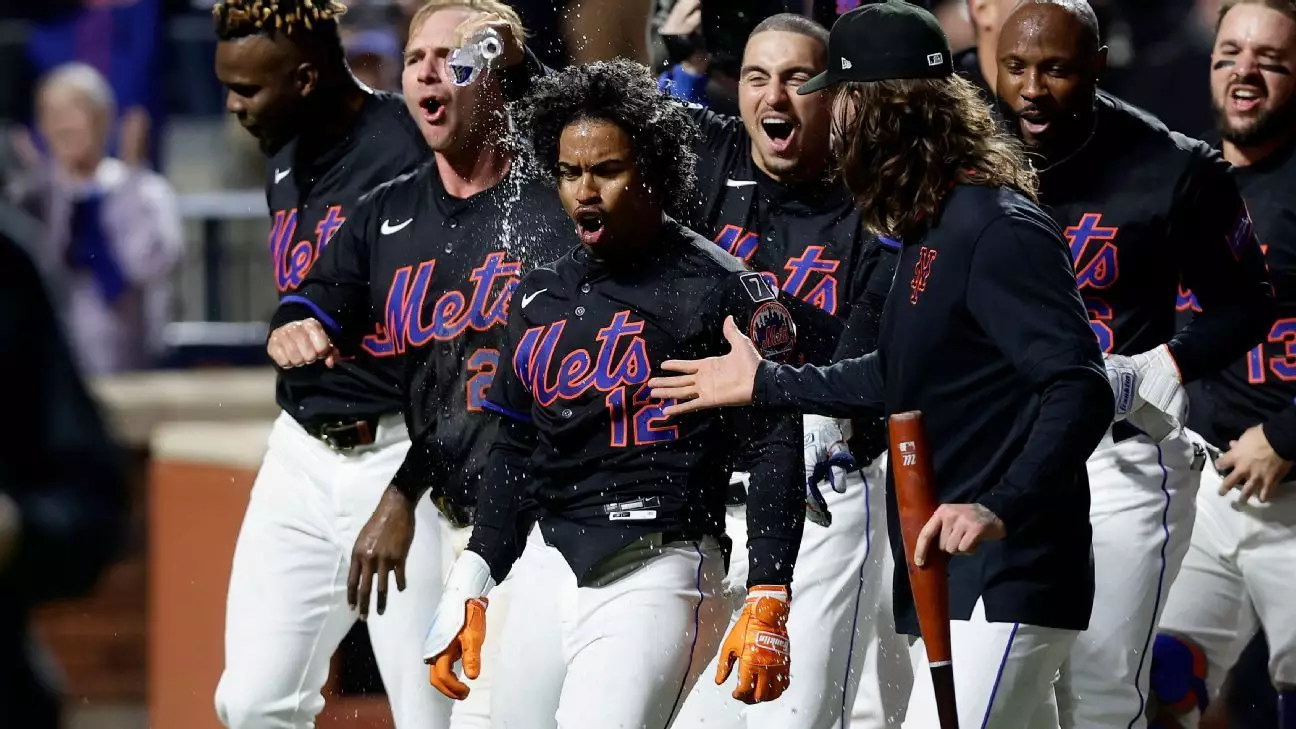In the fierce arena of Major League Baseball, no player is immune to the prying eyes of expectation and scrutiny. Francisco Lindor, the New York Mets’ star shortstop, has faced this crucible with both resilience and a measure of uncertainty. Starting the season with an abysmal 0-for-11 streak, Lindor was thrust into a familiar narrative—a slow starter haunted by his early season inefficiencies. His candid response to the media, “I don’t know,” encapsulated his frustration and uncertainty, mirroring the feelings of countless athletes at the crossroads of performance and expectation. But as the saying goes, once you’re at your wit’s end, sometimes the breakthrough comes when you least expect it.
What transpired next, however, was not just a mere turnaround; it was a renaissance sparked by sage advice from the Mets’ hitting coach, Jeremy Barnes. The plan was simple yet profound: stop chasing hits, trust your skills, and most importantly, let your preparation do the talking. This mindset has propelled Lindor onto a trajectory that reflects the dynamic athlete he can be—a manifestation of trust in one’s preparation leading to exponential results.
A Stellar Transformation
Fast forward to the current season, and Lindor has metamorphosed into one of the league’s brightest stars. After the birth of his child—a significant life event that perhaps provided a fresh perspective—Lindor has transformed a forgettable start into an awe-inspiring performance with a batting average of .349, five home runs, and an impressive .972 OPS. This emphatic comeback has been instrumental in leading the Mets to the pinnacle of Major League Baseball standings, positioning them as contenders right out of the gate.
His recent exploits, including a spectacular walk-off home run and a knack for consistently reaching base, have ignited excitement among Mets fans. Lindor’s ability to perform under pressure is indicative of a player who understands that the game is as much mental as it is physical. The notion that he learned to focus on executing the plan rather than succumbing to the weight of expectation speaks volumes about his development and adaptability as an athlete. This transformation reflects a more matured Lindor—one who recognizes the value of collaboration and the strength found in teammates.
The Power of Team Chemistry
In sports, chemistry often serves as the invisible force that elevates performance from good to great. Lindor’s resurgence has not occurred in isolation; rather, it has coincided with the establishment of a positive team culture within the Mets’ ranks. He is not just a cog in the machine but a vital piece of a larger puzzle that thrives on support, camaraderie, and shared objectives. The synergy among players such as Juan Soto, Pete Alonso, and Brandon Nimmo contributes to an environment conducive to individual and collective success—enhancing Lindor’s productivity while providing an electric atmosphere around the team.
This environment contrasts starkly with last season’s bleak moments when Lindor struggled and faced adversity from fans and the media alike. The negative energy of the previous season was palpable, and it somehow transformed into a collective euphoria, making each player’s contribution crucial to the Mets’ early success. Lindor’s perception of team dynamics has shifted—he identified the importance of a positive environment, stating that “the vibes” are much better than before. This newfound energy is infectious and has served as the foundation upon which the team’s resurgence is built.
The Art of Execution
One cannot overlook the elegance of a well-executed plan in baseball. Lindor’s philosophy now revolves around trust—trust in his abilities, skills, and the preparation that precedes each game. The advice from Barnes—to execute the plan consistently—can be seen not just as guidance but as a cornerstone for peak performance. Lindor embodies the principle that success in sports often hinges upon the ability to remain steadfast and focused. He has embraced a mindset of simplicity amidst the noise of competition, allowing his athleticism and training to shine through.
In the midst of this resurgence, the question arises: has Lindor finally shed the labels that had previously defined him? The early season struggles may have highlighted vulnerabilities, but the ensuing exploits reveal a resilient athlete not just reclaiming his place, but redefining it. As he moves toward a recognizably elite level—potentially setting him up for an All-Star nod—Lindor showcases how important it is to trust the process, lean on teammates, and embrace the challenges that come with the pursuit of greatness.
The trajectory of Francisco Lindor serves as a reminder that the path to excellence is seldom linear. Through the highs, the lows, and the invaluable lessons learned, it’s evident that trusting oneself while navigating the complexities of performance can lead to significant breakthroughs—turning trials into triumphs.


Leave a Reply